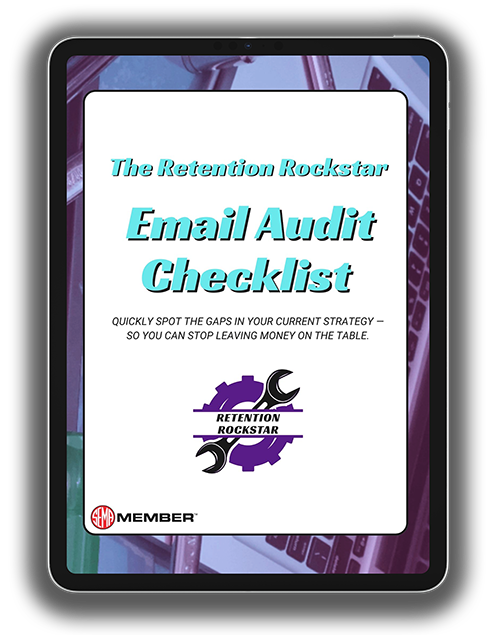Imagine this: A customer is browsing your automotive e-commerce store. They add a high-performance air filter, a detailing kit, maybe even a set of LED headlights to their cart. Then—poof—they vanish without completing the purchase.
Abandoned carts are a revenue leak for any e-commerce brand, but in the automotive space, where products can be high-ticket and niche-specific, every lost sale matters. Fortunately, abandoned cart emails are a powerful tool to recover those lost sales—when done right.
If your current cart recovery emails are just one reminder and a generic discount, it’s time to level up. Here’s how to turn your abandoned cart flow into a high-converting revenue engine.
Why Cart Abandonment Hurts More in Auto E-Commerce
Automotive e-commerce customers aren’t just buying—they’re researching. Many shoppers compare brands, specs, installation difficulty, and reviews before committing. This leads to a longer decision-making process—and more opportunities to abandon carts.
Additionally, high-value parts or specialized tools come with more hesitancy. If your follow-up emails don’t address those hesitations, customers might never return.
1. Send the First Email Within 1 Hour
Timing is everything. The sooner your reminder lands in the inbox, the better the chance of recovery. Aim to send your first cart abandonment email within 60 minutes of the drop-off.
What to include:
- A clear subject line like “Still thinking about those LED Headlights?”
- The exact items left behind
- A visible CTA (Call to Action) button like “Return to Your Cart”
Pro Tip: Use urgency phrases like “Items in your cart are going fast” or “Limited stock available.”
2. Personalize the Message
Automotive shoppers are detail-oriented. A generic email won’t cut it.
Personalization tips:
- Mention the specific product (“That K&N Air Filter is still waiting for you.”)
- Use the customer’s name in the subject line or body
- Suggest related items (e.g., “Don’t forget your oil kit to go with that filter!”)
Bonus: If the shopper has purchased before, reference their last order and remind them why your products work.
3. Use a 3-Email Recovery Sequence
One email isn’t enough. Build a sequence that continues to provide value and addresses objections.
Email 1 (1 hour later): Reminder with items + urgency
Email 2 (24 hours later): Add social proof (reviews, testimonials) + alternative recommendations
Email 3 (48–72 hours later): Offer a limited-time discount or free shipping
Keep subject lines fresh:
- “Your cart is still here—just like your project?”
- “These reviews might help you decide”
- “Here’s 10% off to finish your build”
4. Include Social Proof and Trust Signals
Many customers abandon because they’re unsure. Ease that fear by including:
- Customer reviews with images
- Star ratings
- Warranty badges
- Trust icons (SSL secure checkout, 30-day returns)
This is especially important when selling performance parts or specialized gear. It builds confidence and reduces hesitation.
5. Address Shipping, Fitment, or Return Concerns
In auto e-commerce, buyers often worry about:
- Will this part fit my car?
- Is shipping fast?
- What if I order the wrong item?
Tackle these head-on with:
- Vehicle fitment tools or reminders
- Fast/free shipping banners
- “Easy Returns, No Hassle” messaging
Even add a direct link to live chat or support if they need questions answered before buying.
6. Offer Smart Incentives
Discounts are great—but don’t lead with them. Start with value, and only offer incentives to fence-sitters. Use:
- Limited-time discount codes
- Free shipping upgrades
- Bundle offers (buy this, get 20% off that)
Use cart value segmentation:
- <$50 cart: Incentivize with free shipping
- $50–$150: Offer 10% off
- $150+: Free accessory or limited edition add-on
7. Make Emails Mobile-Optimized
A large portion of automotive shopping research is done on mobile—especially DIYers browsing in the garage or driveway.
Your emails must:
- Load fast
- Use large CTA buttons
- Show product images clearly
- Have concise, scannable text
8. Test & Optimize Continuously
Monitor metrics like:
- Open rates
- Click-through rates
- Recovery rate (cart-to-purchase)
- Revenue per email sent
A/B test:
- Subject lines (urgency vs curiosity)
- CTA wording
Layout styles (grid vs full-width product)
Over time, identify what language and structure resonate with your specific buyer segments.
Cart abandonment isn’t the end of the customer journey—it’s a second chance to close the deal. For automotive eCommerce brands, a well-crafted, multi-touch abandoned cart email flow is essential to recovering lost sales and driving long-term growth.
Treat every cart like an engine mid-build: you have all the parts—now put it together with strategy, timing, and precision. With the right abandoned cart emails, you can turn hesitation into horsepower for your bottom line.





